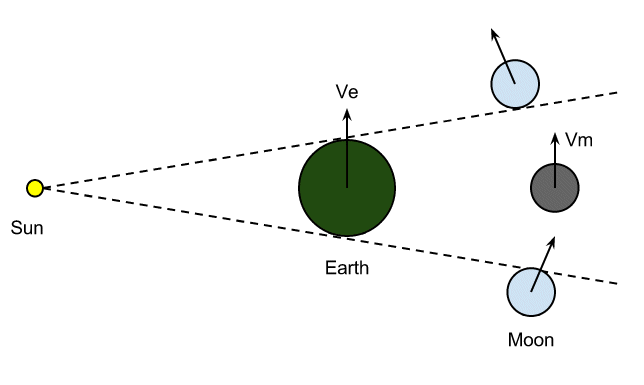In anticipation of the upcoming April 2014 lunar eclipse, I decided to use the 3D virtual planetarium software Stellarium to simulate what it is supposed look like where I live, since I've never actually witnessed an actual eclipse before. I set the clock to begin at the moonrise before the beginning of the event and to tick at a rate of a few virtual-minutes per real-second, pressed play, and waited for the eclipse to begin. When it did, I saw something I did not expect. To be honest, I realized my expectations were embarrassingly naïve.
I watched the Moon rise in the east and begin its upward left-to-right path across the night sky, towards its zenith in the south. My expectation was that the moment the Moon enters Earth's shadow which marks the beginning of the eclipse would be visually apparent by the darkening of the full moon's outer limb on the right side, and the darkening would progress from right to left from there. When I saw that the darkening actually progresses in the opposite direction, I immediately realized that my understanding of the geometry and kinematics of the Earth-Moon-Sun system must be much shallower than I would have thought.
My main question is must lunar eclipses happen this way every time, and if so why? My gut is now telling me that it does, so I'm mostly interested in an answer of reasonable depth to the 'why' part of the question.
Additionally, it occurs to me that the observation of left-to-right progression of darkening of the Moon's face during a lunar eclipse is especially counter-intuitive from the point of views of ancient geocentric cosmologies based on a stationary Earth that doesn't rotate. Can this observation be taken as empirical evidence that the Earth rotates? (I could be completely off base here. If so, please correct me.)
